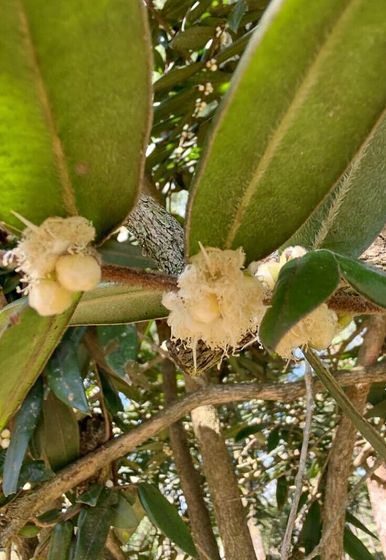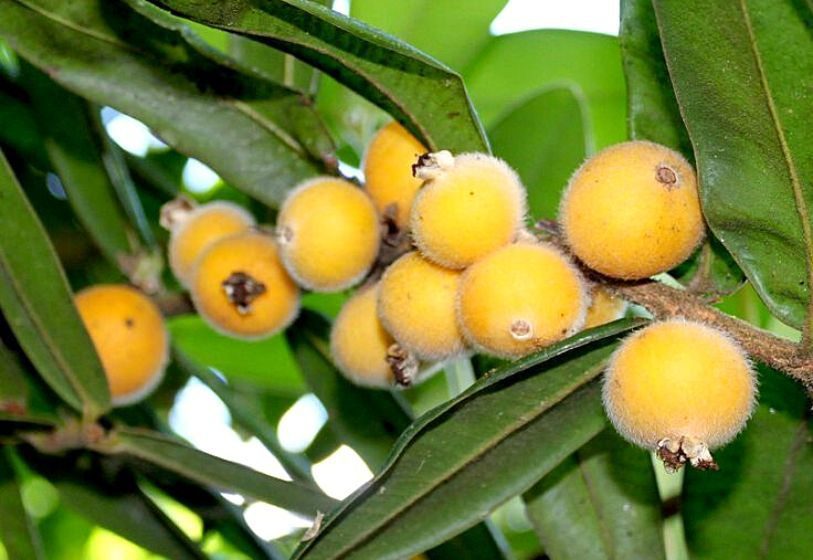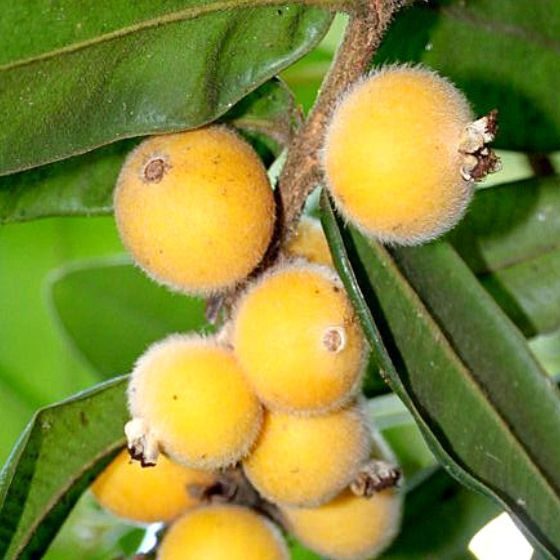The Brazilian Hairy Fruit is a fruit-bearing shrub or small tree, native to the southeast, south, and northeast regions of Brazil, where it is typically found in areas of the Atlantic Forest, in domains of rainy forest and coastal sandy vegetation. It usually reaches a height of 2 to 4 meters and is quite branched, with a dense crown and branches that are initially erect but later arch and almost touch the ground. The leaves are elliptical, leathery, opposite, tapering at the tip, pubescent on the lower surface, and dark green in color. It blooms in the fall, with axillary inflorescences of the glomerulus type, featuring long white stamens that give the flowers a delicate pompom-like appearance. The flowers are also hermaphroditic, nectar-bearing, and suitable for bee pasture formation.

The ensuing fruit ripens in the spring and is a globular berry with a thick, tomentose (covered with hairs), and yellow skin when ripe. The pulp is thin, delicate, juicy, translucent, pleasant, sweet, and slightly acidic, while the skin and seeds have an astringent flavor. The fruit encases one to two large seeds, bean-shaped and brown in color.
It’s quite rare to find Brazilian Hairy Fruit for sale since they are quite similar to jabuticaba fruits and tend to perish rapidly, consequently losing their value. However, they are a traditional species in home orchards, where we can enjoy freshly harvested fruits right from the tree. Besides being flavorful, the fruits are rich in vitamin C and are usually consumed fresh. Due to their attractiveness to wildlife, Brazilian Hairy Fruit is an excellent choice for projects aimed at restoring degraded areas. Moreover, its elegant, lush canopy with dark green foliage, combined with appealing flowering and fruiting, makes it a highly ornamental option for landscaping. It can also be grown in pots, adding decoration to balconies, patios, and terraces.

It should be cultivated in full sun or partial shade, in fertile, deep, well-draining soil enriched with organic matter, and regularly irrigated during the first years of establishment. It thrives in a mild to warm climate, with consistent water availability throughout the year. Formation pruning is unnecessary, but you can trim it to control growth, facilitate harvesting, or shape it into a small tree by removing excess basal branches. Fertilize every 3 months with well-rotted manure and fruit tree-specific fertilizers, adjusted according to the plant’s size and canopy projection. It doesn’t tolerate frost or prolonged drought, preferring high air humidity. Propagate by seeds, collected from ripe and depulped fruits, planted within two weeks as their germination capacity quickly diminishes. Keep the substrate moist and wait for 25 to 50 days for germination. Brazilian Hairy Fruit grows rapidly and may bear fruit as early as the second year after planting.


